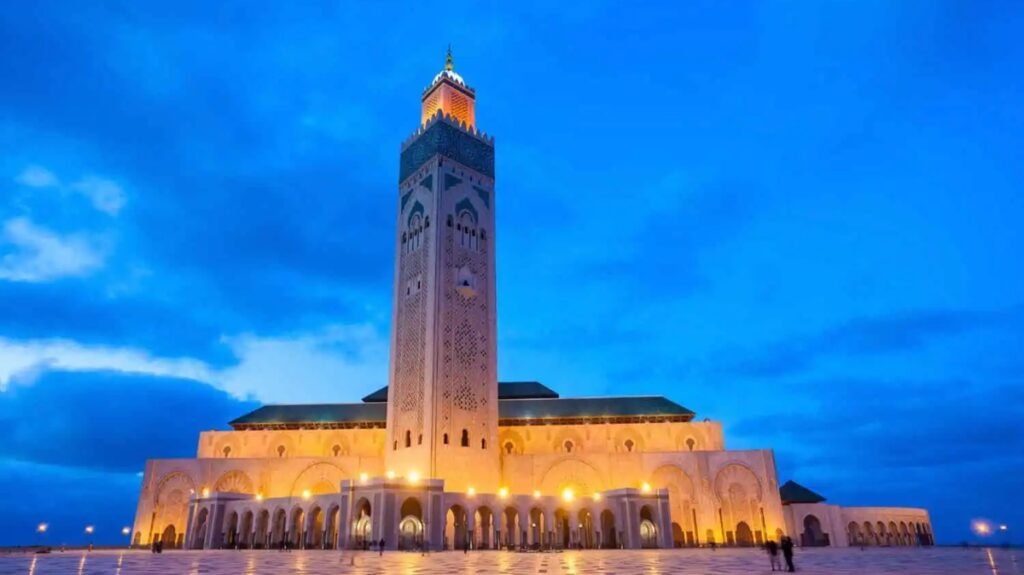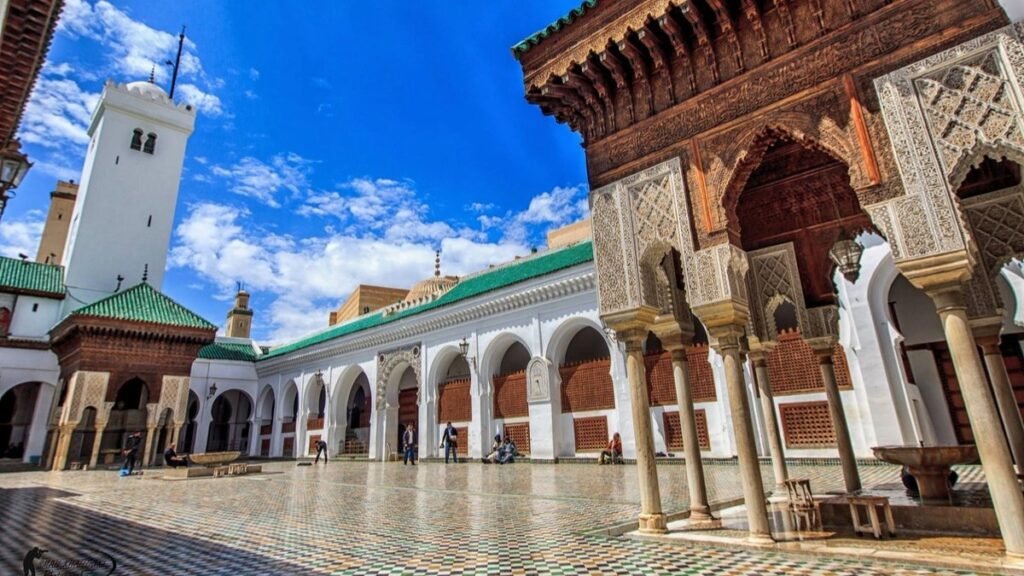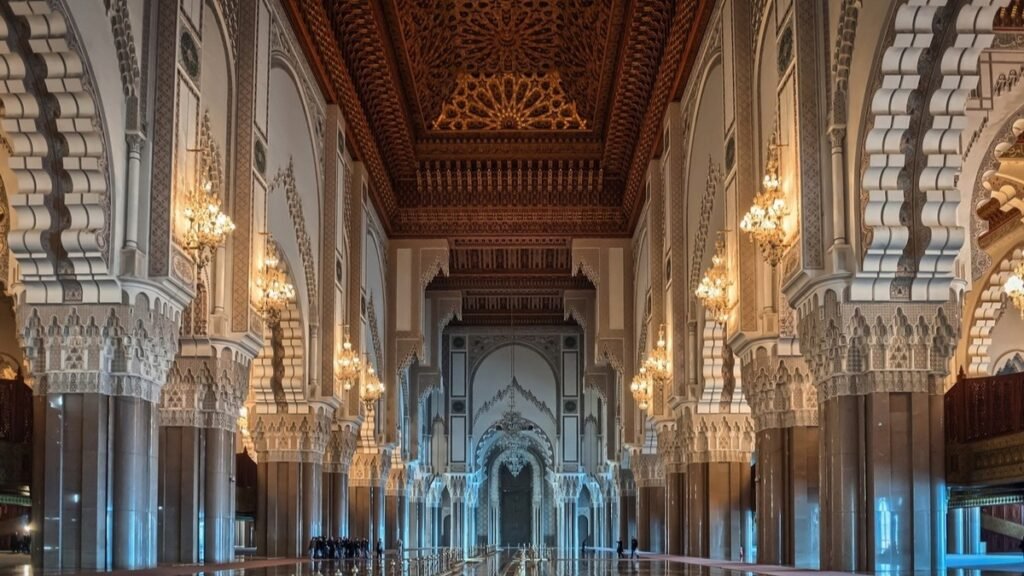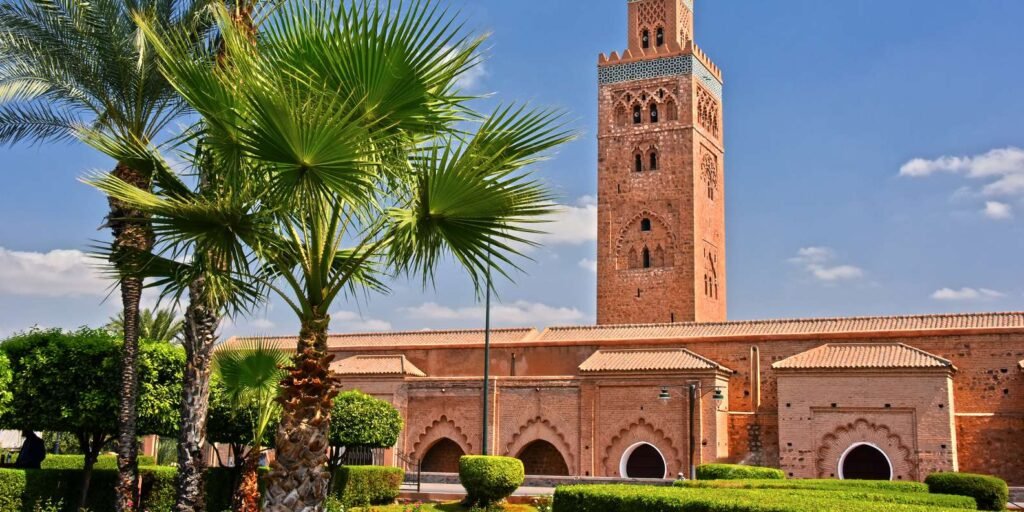Moroccan Mosques: Identity, History, and Renewed Architecture

🕌 1. The mosque...more than a place of worship
In Morocco, the function of the mosque is not limited to performing prayers; it extends beyond that to become an educational and community institution. Throughout the ages, the mosque has served as a space for teaching religious and linguistic sciences, and as a training center for scholars and jurists. It also plays an important role in instilling values of solidarity and social cohesion through sermons, lessons, and local initiatives. This multi-functional dimension is evident in its architecture, which reflects a sense of belonging and identity. The mosque represents a link between the rich religious past and the renewed urban present. Thus, the mosque in Morocco has become a comprehensive institution that influences religion, culture, and society.
🏛 2. Deep roots in history

Since the establishment of the first Moroccan state under Idris I in the eighth century AD, the construction of mosques has been linked to the consolidation of Islamic identity and the consolidation of political and religious legitimacy. The Moroccan state recognized early on the importance of the mosque as a center of spiritual guidance and societal framing, and therefore paid special attention to it throughout history. The Al-Qarawiyyin Mosque in Fez, founded in 859 AD by Fatima al-Fihri, is a living example of this connection. Its role was not limited to worship, but rather transformed into a center of scholarly influence that attracted students from across the Islamic world. Other major mosques, such as the Koutoubia Mosque in Marrakesh and the Hassan I Mosque in Casablanca, also contributed to consolidating this cultural and religious role. Thus, mosques have historically been prominent landmarks in the Moroccan state's history and mirrors of its profound identity.
🧱 3. Unique Moroccan architecture
Moroccan mosques are characterized by a distinctive architectural style known as the “Moroccan-Andalusian style,” which combines simplicity and symbolism:
- square minarets
- Zellige and carved wood
- Horseshoe arches
- open courtyard and fountain
Every element in it reflects a deep aesthetic and spiritual philosophy.
✨ 4. Hassan II Mosque: Towering Architecture
Located in Casablanca, it is one of the largest mosques in Africa and the world, with a 210-meter minaret, built partly over the Atlantic Ocean. It is a contemporary embodiment of the grandeur of Moroccan architecture and a tribute to religious identity in the modern era.

The Hassan II Mosque is a contemporary architectural masterpiece that embodies Morocco's ambition to combine modernity and tradition. It was designed to be a towering symbol of Islamic identity at the heart of the economic capital. Built on a vast site overlooking the Atlantic Ocean, it symbolizes Islam's openness to the world. Its minaret, the tallest in the world at 210 meters, features advanced technology, including laser beams pointing toward Mecca. The mosque also features a vast prayer hall, a retractable roof, and intricate decorations that reflect the skill of traditional craftsmen, making it a living model of Moroccan architectural innovation in the 21st century.
📚 5. The mosque as a scientific institution
Throughout the ages, mosques have been associated with education, with study sessions on interpretation, jurisprudence, and language held under their domes. The Al-Qarawiyyin Mosque, the Koutoubia Mosque in Marrakesh, and the Andalusian Mosque in Fez witnessed eras of intellectual prosperity that transcended the borders of Morocco.
Throughout Moroccan history, the mosque was not merely a place of worship; it was the pulsating heart of scholarly life, where the most ancient schools of thought emerged. It hosted scholarly circles that taught various disciplines, from Sharia law to medicine and astronomy, attracting scholars and students from Andalusia, Africa, and the Islamic East. Thanks to this scholarly function, the mosque became a beacon of learning and cultural influence, playing a pivotal role in shaping Morocco's cultural identity.
🤲 6. A renewed social and spiritual role
Mosques in Morocco today play a growing social and spiritual role, overseen by the Ministry of Endowments and Islamic Affairs to ensure harmony and moderation. In addition to the supervision of imams and religious guides, mosques offer literacy programs, health awareness programs, and outreach activities targeting youth and women. Especially during Ramadan and religious occasions, mosques transform into centers of social solidarity through group lessons, aid distribution, and the revival of community spirit.
🌍 7. Religious symbolism in the heart of ancient cities

In ancient cities such as Fez, Marrakesh, and Tetouan, the mosque is not merely a religious landmark; it is an urban nucleus around which the daily lives of residents are organized. The presence of the grand mosque at the heart of the city symbolizes the status of religion as the primary organizer of society, and from it emanate markets, schools, baths, and even the city gates. This centralization reflects the Islamic philosophy of linking worship to public life and making the mosque a starting point for urban development and social interaction.
🧭 8. Mosques as a destination for cultural tourism
Despite their religious nature, Morocco's grand historic mosques have become a part of the tourist and cultural landscape, attracting visitors from all over the world. In cities such as Fez, Marrakesh, and Casablanca, some mosques, such as the Hassan II Mosque, are open to non-Muslims at specific times, offering them a unique opportunity to discover the beauty of Islamic architecture and the spirituality of the place. This openness reflects a tolerant and open Morocco, contributes to promoting interfaith and intercultural dialogue, and serves as a tourist attraction that generates economic revenue and supports the preservation of religious and architectural heritage.
🛡 9. Between authenticity and innovation
In recent decades, Morocco has witnessed a boom in mosque construction that combines respect for authentic architectural heritage with modern design and construction techniques. Architects have been keen to integrate traditional elements such as zellij and domes with technological innovations such as smart lighting and advanced ventilation systems, creating comfortable yet modern prayer spaces. Environmental conservation has also become a priority in construction, with the emergence of "green mosques" that rely on renewable energy sources and reduce water and energy consumption. This blend of authenticity and innovation reflects Morocco's ambitious vision to keep pace with global developments without compromising its deep cultural and religious identity.
🧿 10. The mosque is a mirror of Moroccan identity.
From Fez to Dakhla, from Tetouan to Zagora, the mosque in Morocco remains a symbol of spiritual unity, a promoter of values, and a testament to the balance between authenticity and innovation in a religious experience spanning centuries.





